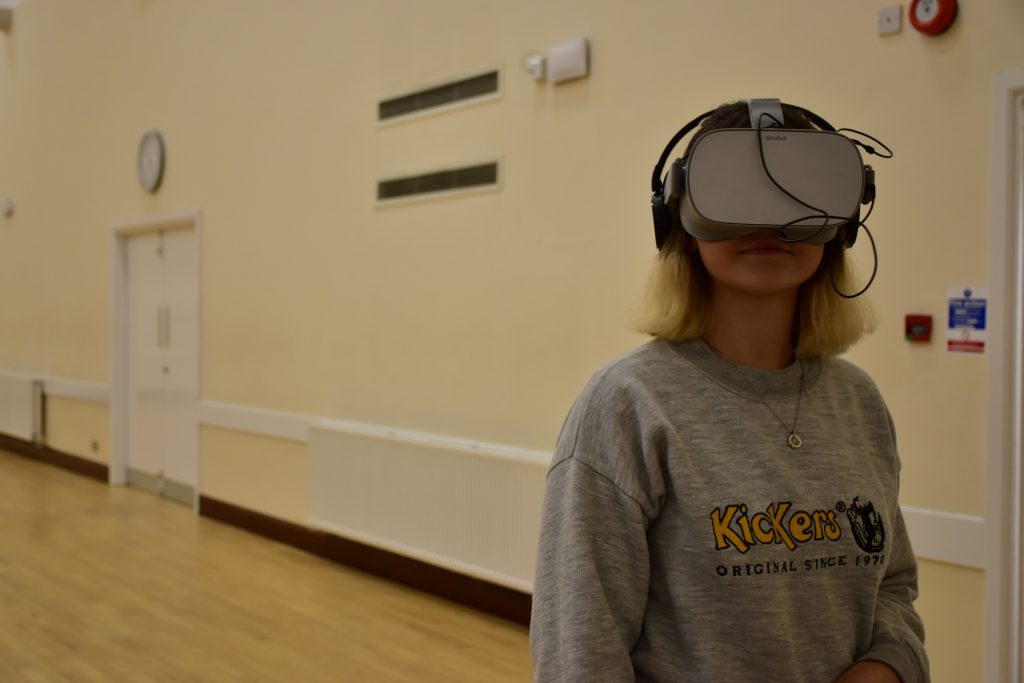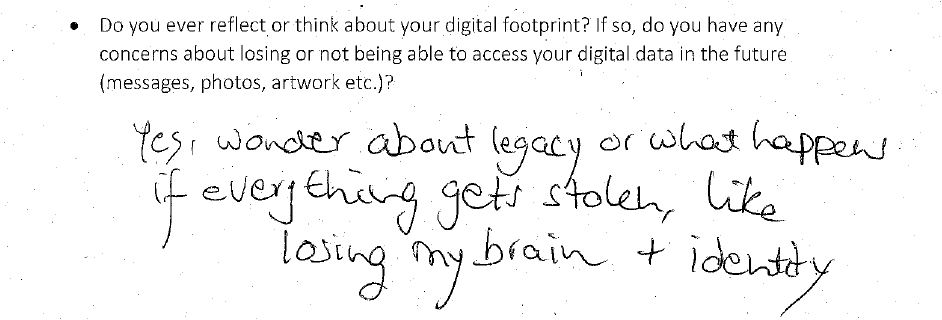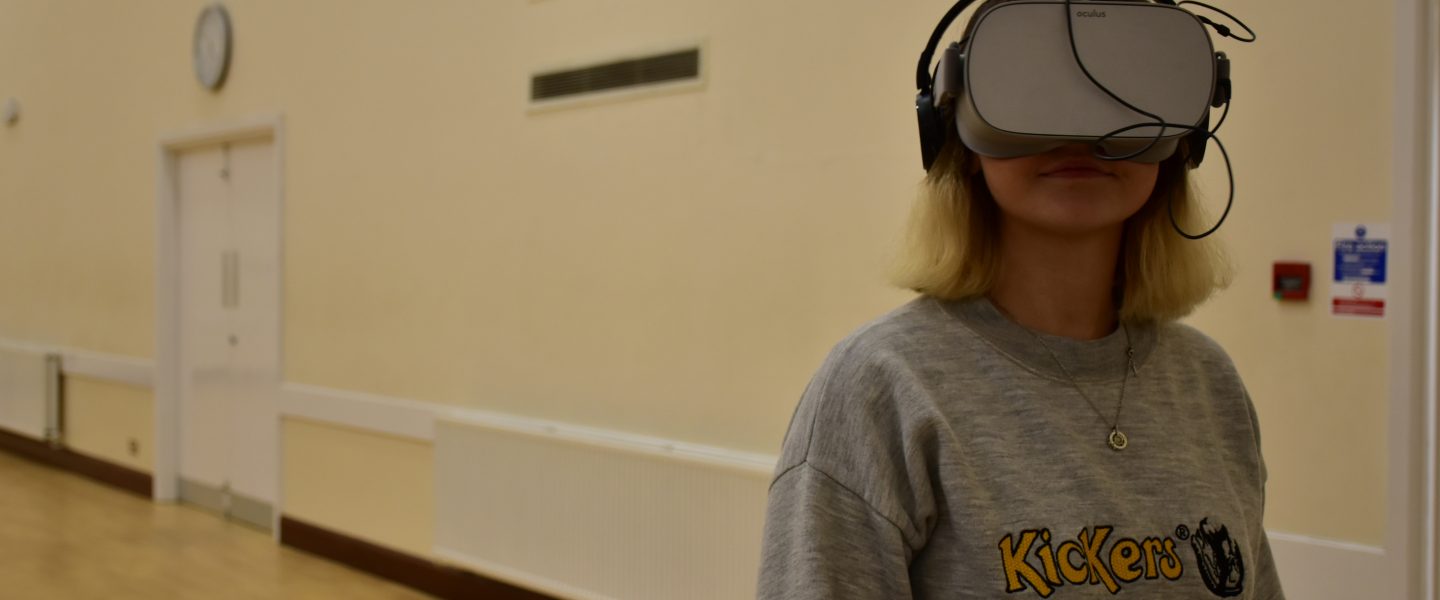Post by Ed Liddle, Learning and Engagement Assistant at The Amelia.

Who is the audience for a digital VR artwork commission? Is such a seemingly niche (in the museum and heritage sector) commission worth it?
A Mirror for Remembering has provided a fantastic opportunity for The Amelia (Tunbridge Wells) to engage with existing and new audiences. This is, in part, due to the highly portable nature of the artwork and relative ease of setting up the VR experience in unusual places, but also because of the potential to benefit from the lure of the digital and the public’s growing intrigue about VR.
At The Amelia we regularly facilitate object handling outreach sessions. The format can be found replicated at a range of cultural/heritage sites but the principal is the same: to handle real objects from the past and engage in conversations around the objects, prompting audiences to learn new things about the things they are handling.
Of course, in its purest form, there is not anything to handle in A Mirror for Remembering, however the principle of encountering something new that is unusual or extraordinary, the meaning of which is gradually revealed through investigation, felt like something we could transfer to outreach sessions featuring the VR artwork as the ‘object’: the thing being handled.
With an object handling approach in mind, we decided to present the artwork (in its trailer form) to three groups that we currently work with on a regular basis:
- Volunteers at The Amelia (participants aged between 60-75)
- Young Consultants Group (participants aged between 16-25) and
- A local drama group (participants aged between 7-14)
Wearing the VR headset and a pair of headphones, each participant was emerged into the trailer, complete with the accompanying soundtrack. With an approximate runtime of two minutes the trailer gives participants an overview of the full-length artwork and features shorter clips of scenes that are found in the full-length experience.
After each participant had finished experiencing the artwork, we asked them to respond to some questions and conversation starters.
Usually when delivering our object handling sessions, we change the tone, style and gestures to match the audience we are presenting to. We’ve found that generally speaking, there are certain objects that are universally understood by all generations and there are, generally speaking, objects which only older generations are familiar with. At these sessions younger audiences require further explanation and more detailed context to understand the objects.
A few observations:

It was interesting to note that even though there was a large range of ages, each participant that experienced the artwork responded in a positive, open way. There was no need to further explain context or give detailed explanations. The artwork spoke for itself. Of those that experienced the artwork, half had previously used VR before, and half had not.
When asked about whether they liked or disliked the experience there was an equally balanced amount of participants who found some things intriguing and other elements of the artwork more overwhelming.
All the participants were fascinated by the virtual construction of the artwork using objects taken from the TWBC collection.
The volunteers, some of whom have been volunteering for many years and who know the objects intimately, were enthralled at the transformation their well-loved objects had undergone. The awe and wonder was also felt by the other participants too, even though they had little or no prior knowledge of the objects featured in the artwork.
The artwork prompted a range of responses, with some participants comparing it to video games they’d seen other people playing, but in this case they themselves were part of the game! The artwork seemed to many, to be disorientating, however all participants noted that this was a positive aspect to the artwork not one of being lost or scared.
Nearly all of the youngest participants told us how the experience felt like school or somewhere they might go to learn something. Perhaps these responses demonstrate what is learned in classrooms today or perhaps they were articulating more directly some of the scenes in the artwork which reference white walled rooms with ageing brown objects contained within.
A Mirror For Remembering provokes reflection upon the nature of digital art and digital preservation. It was therefore interesting to hear the varied responses from the participants. Again, the responses were not quite what we had expected to receive, with older participants just as concerned, if not more so, about their digital footprint than the younger participants.
We have just begun to explore the potential of this artwork to engage new and existing audiences. However, initial feedback allows us to be confident that our new digital artwork commission, like all great artworks, has the potential to speak to a vast range of people, enabling them to draw on their own personal experiences, interests and concerns about the age we live and work in.

[…] Continue reading on amirrorforremembering.com […]